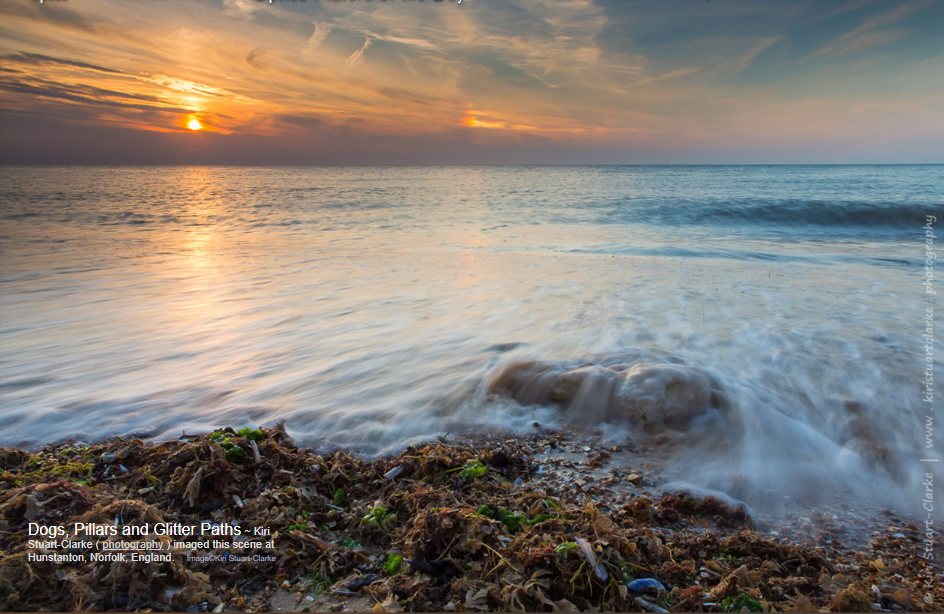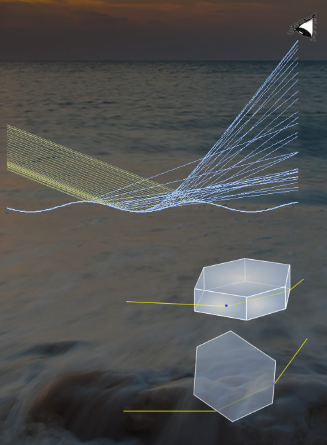Sundogs, Pillars & Glitter Paths - Norfolk, England - OPOD
Sundogs, Pillars & Glitter Paths - A Phenomenon in Norfolk, England
In the enchanting coastal region of Norfolk, England, nature occasionally treats us to a spectacular display of atmospheric optics. Sundogs, pillars, and glitter paths are mesmerizing phenomena that capture the imagination of both scientists and admirers of the natural world. These captivating optical effects arise from the interaction of sunlight with ice crystals in the atmosphere, resulting in breathtaking displays of light and color.
Glitter Paths: The Sparkle of the Sea
When the sun's rays interact with the undulating surface of the North Sea, a mesmerizing phenomenon known as a glitter path emerges. The gentle waves on the sea's surface cause the sunlight to reflect and scatter in myriad directions, creating a shimmering trail of light. The glitter path appears curved at its base due to the asymmetry induced by the nearby shoreline. It is a sight that enchants observers, evoking a sense of tranquility and wonder.
Pillars: Mirrors in the Clouds
Imagine looking up at the sky and witnessing what appears to be a beam of light extending upwards from the sun. This captivating optical illusion is known as a pillar. Pillars are formed by horizontal plate-like ice crystals within the clouds. These ice crystals act as mirrors, reflecting and imitating the glittering effect seen in the glitter paths. As a result, a pillar seemingly emerges from the sun, adding another layer of intrigue to the atmospheric display.
Sundogs: Prismatic Canines in the Sky
Sundogs, also referred to as parhelia, are striking optical phenomena that often accompany pillars and glitter paths. They appear as bright spots of light on either side of the sun, forming a halo-like effect. Sundogs are created when sunlight interacts with plate-shaped ice crystals in the atmosphere. These crystals refract and disperse sunlight, producing a prismatic effect that results in the formation of sundogs. The distance of the sundog from the sun varies, with the closest point being approximately 22° away when the sun is setting, and a wider leash when the sun is higher in the sky.
The Dance of Light on the Sea
As sunlight reflects off the wavy surface of the sea, it scatters in numerous directions, creating a mesmerizing dance of light. This phenomenon often gives rise to caustics, which are sheets of intense light that appear as dazzling points on the sea's surface. When a boat hull intersects these caustics, intricate and ever-changing spidery patterns emerge. From a distance, the multitude of caustics merge together, forming a glitter path that extends across the water, captivating onlookers with its radiant beauty.
Unraveling the Science Behind Sundogs
The formation of sundogs is intricately linked to the behavior of light as it interacts with plate-shaped ice crystals. When sunlight enters a plate crystal from its side face, it exits through another face inclined at an angle of approximately 60°. If the sun is not on the horizon, the ray of light also undergoes internal reflection an even number of times from the near-horizontal upper and lower faces of the crystal. This internal reflection contributes to the unique appearance of sundogs and enhances their prismatic qualities.
Conclusion
The enchanting phenomena of sundogs, pillars, and glitter paths offer a glimpse into the captivating world of atmospheric optics. In Norfolk, England, these optical displays create moments of awe and wonder for those fortunate enough to witness them. As sunlight interacts with ice crystals in the atmosphere, a symphony of light and color unfolds, captivating our senses and reminding us of the beauty and complexity of nature. Whether it's the shimmering sparkle of a glitter path or the ethereal presence of sundogs, these atmospheric phenomena serve as a reminder of the intricate interplay between light, ice, and the vast expanse of the sky.

Dogs, Pillars and Glitter Paths ~ Kiri Stuart-Clarke ( photography ) imaged this scene at Hunstanton, Norfolk, England. Image©Kiri Stuart-Clarke

Glitter Paths
The light of a cloud curdled sun reflects in gentle North sea undulations to form a glitter path bent at its base by shore induced wave asymmetry.
Pillars
Mirrors in the clouds – horizontal plate habit ice crystals – imitate the glitter as a pillar pretending to beam upwards from the sun.
Dogs
More plate crystals refract and disperse sunlight into a prismatic sundog. At its closest, 22° from its master when he is setting and on a wider leash when he is higher. Rays through the ice prisms reflect too in the waves to form a second glitter path. A glitter dog?
Sunlight reflects off a wavy sea in many directions but there is still order.
Often the reflections form caustics, sheets of intense light which appear to the eye placed as at left as a dazzling point dancing over the sea surface. When intersected by a boat hull they form ever changing spidery patterns.
From further away the many caustics from many waves merge into a glitter path.
Sundog rays are simple by comparison. rays enter a plate crystal side face and leave through another inclined at 60° to it. Unless the sun is on the horizon, the ray also reflects internally (not shown at left) an even number of times from the near horizontal upper and lower faces.
Note: this article has been automatically converted from the old site and may not appear as intended. You can find the original article here.
Reference Atmospheric Optics
If you use any of the definitions, information, or data presented on Atmospheric Optics, please copy the link or reference below to properly credit us as the reference source. Thank you!
-
<a href="https://atoptics.co.uk/blog/sundogs-pillars-glitter-paths-norfolk-england-opod/">Sundogs, Pillars & Glitter Paths - Norfolk, England - OPOD</a>
-
"Sundogs, Pillars & Glitter Paths - Norfolk, England - OPOD". Atmospheric Optics. Accessed on December 22, 2024. https://atoptics.co.uk/blog/sundogs-pillars-glitter-paths-norfolk-england-opod/.
-
"Sundogs, Pillars & Glitter Paths - Norfolk, England - OPOD". Atmospheric Optics, https://atoptics.co.uk/blog/sundogs-pillars-glitter-paths-norfolk-england-opod/. Accessed 22 December, 2024
-
Sundogs, Pillars & Glitter Paths - Norfolk, England - OPOD. Atmospheric Optics. Retrieved from https://atoptics.co.uk/blog/sundogs-pillars-glitter-paths-norfolk-england-opod/.